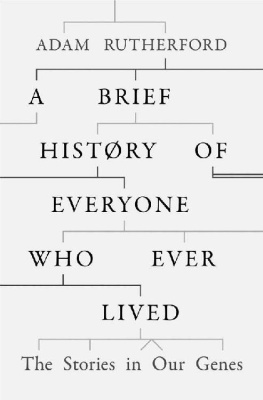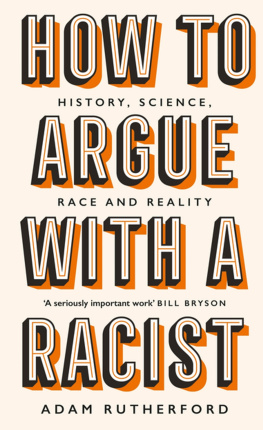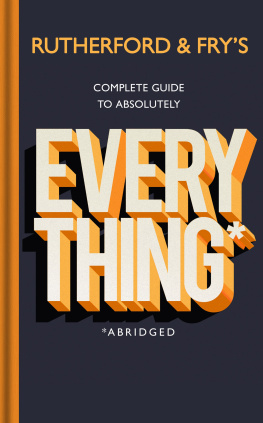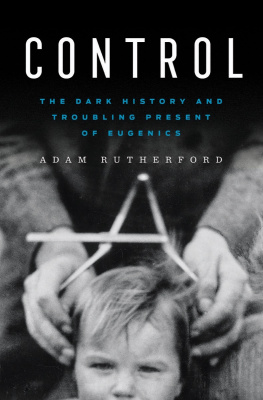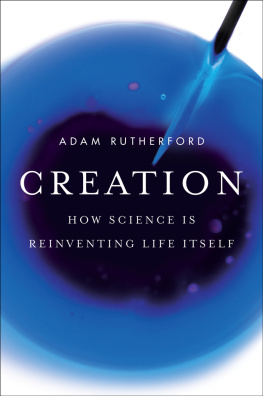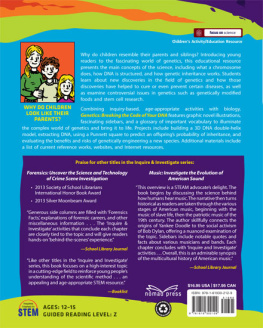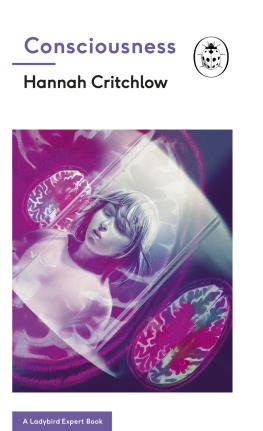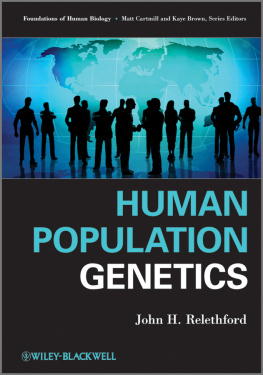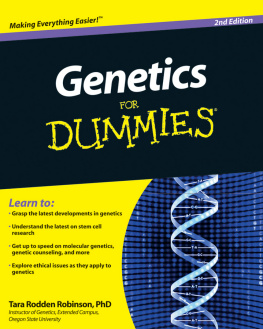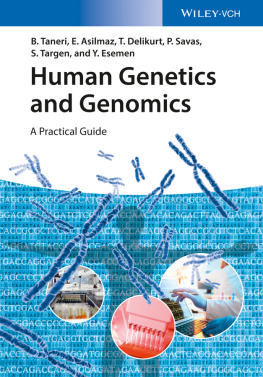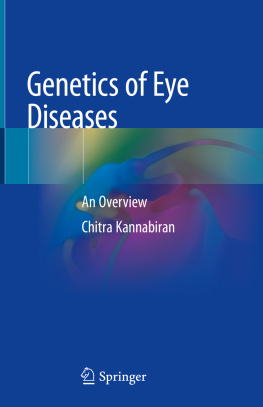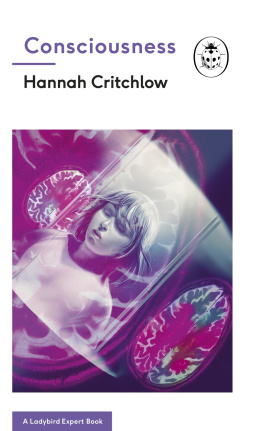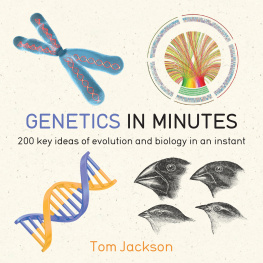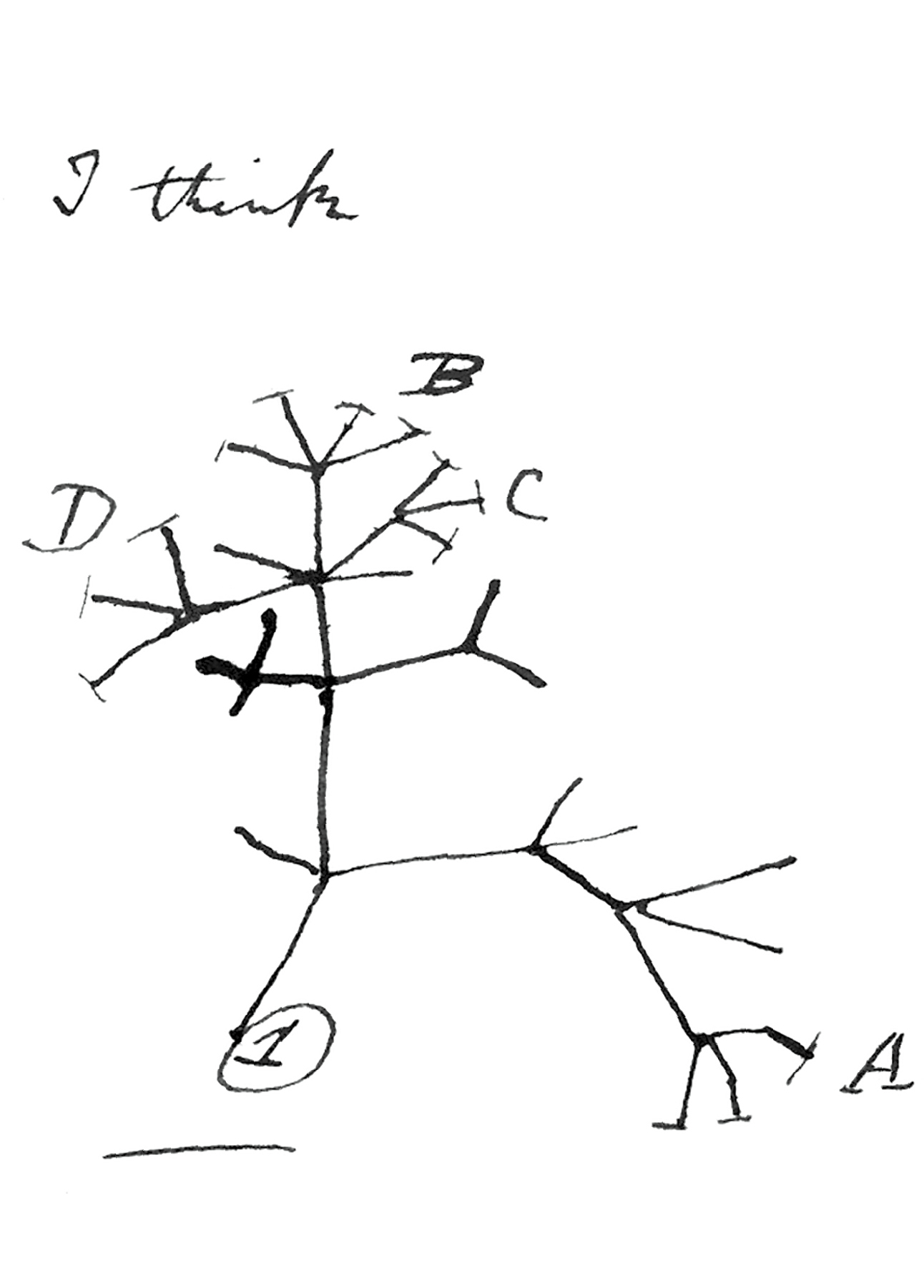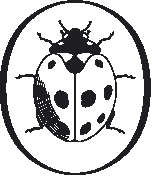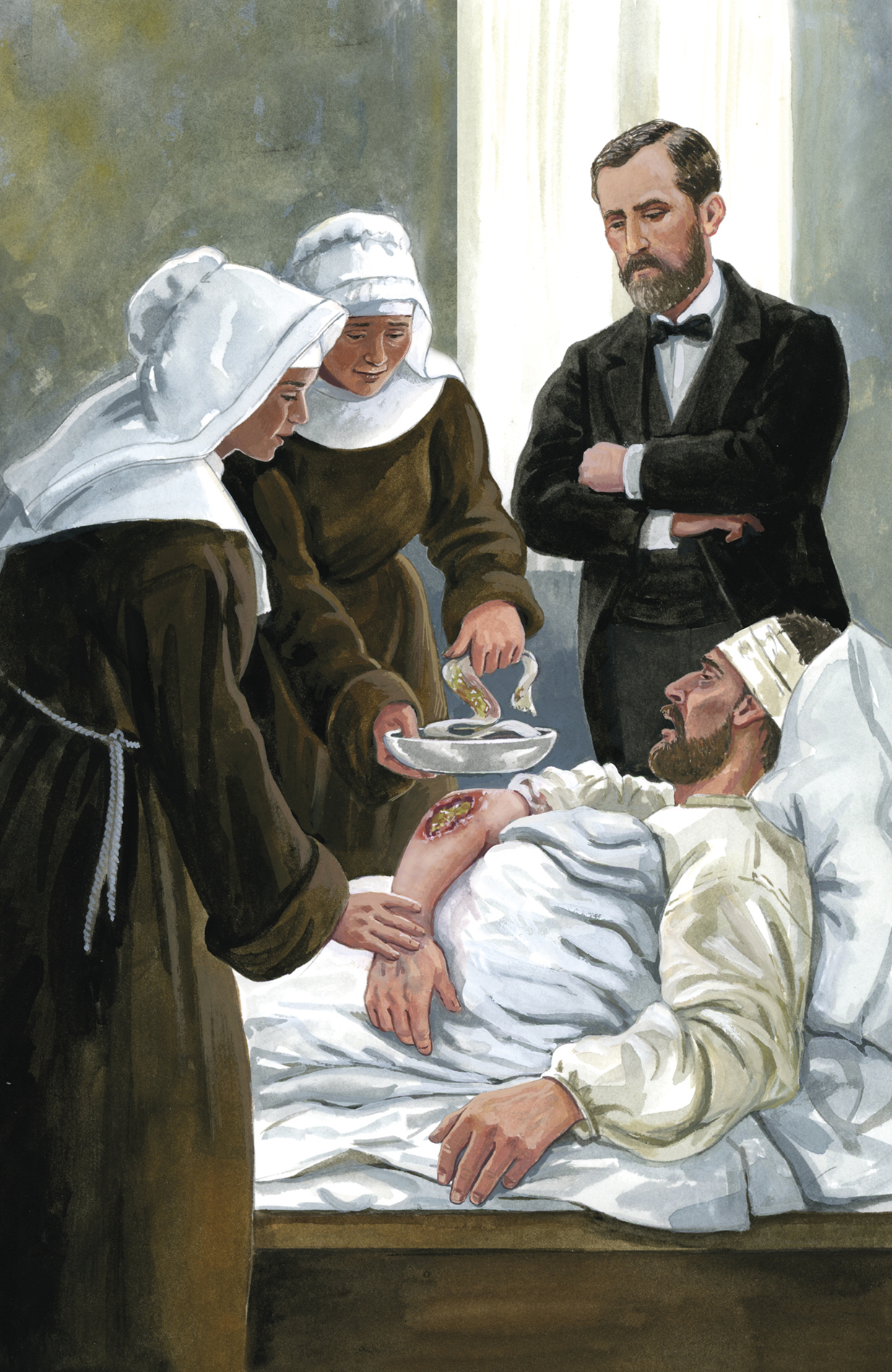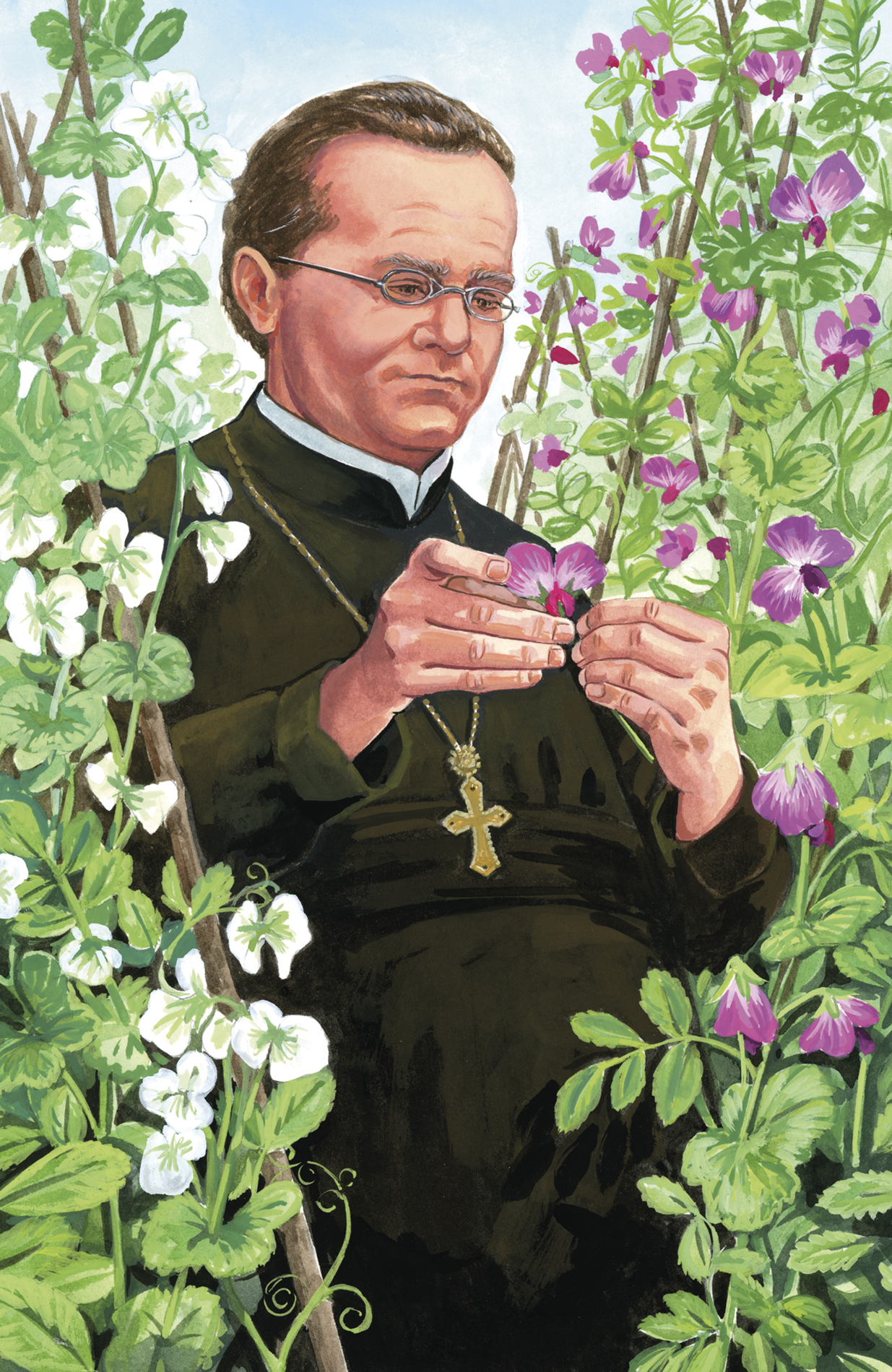Darwins tree of life sketch from his notebook on transmutation of species.
This is a Ladybird Expert book, one of a series of titles for an adult readership. Written by some of the leading lights and outstanding communicators in their fields and published by one of the most trusted and well-loved names in books, the Ladybird Expert series provides clear, accessible and authoritative introductions, informed by expert opinion, to key subjects drawn from science, history and culture.
Every effort has been made to ensure images are correctly attributed; however, if any omission or error has been made, please notify the Publisher for correction in future editions.
Michael Joseph is part of the Penguin Random House group of companies whose addresses can be found at global.penguinrandomhouse.com
Adam Rutherford
GENETICS
with illustrations by
Ruth Palmer
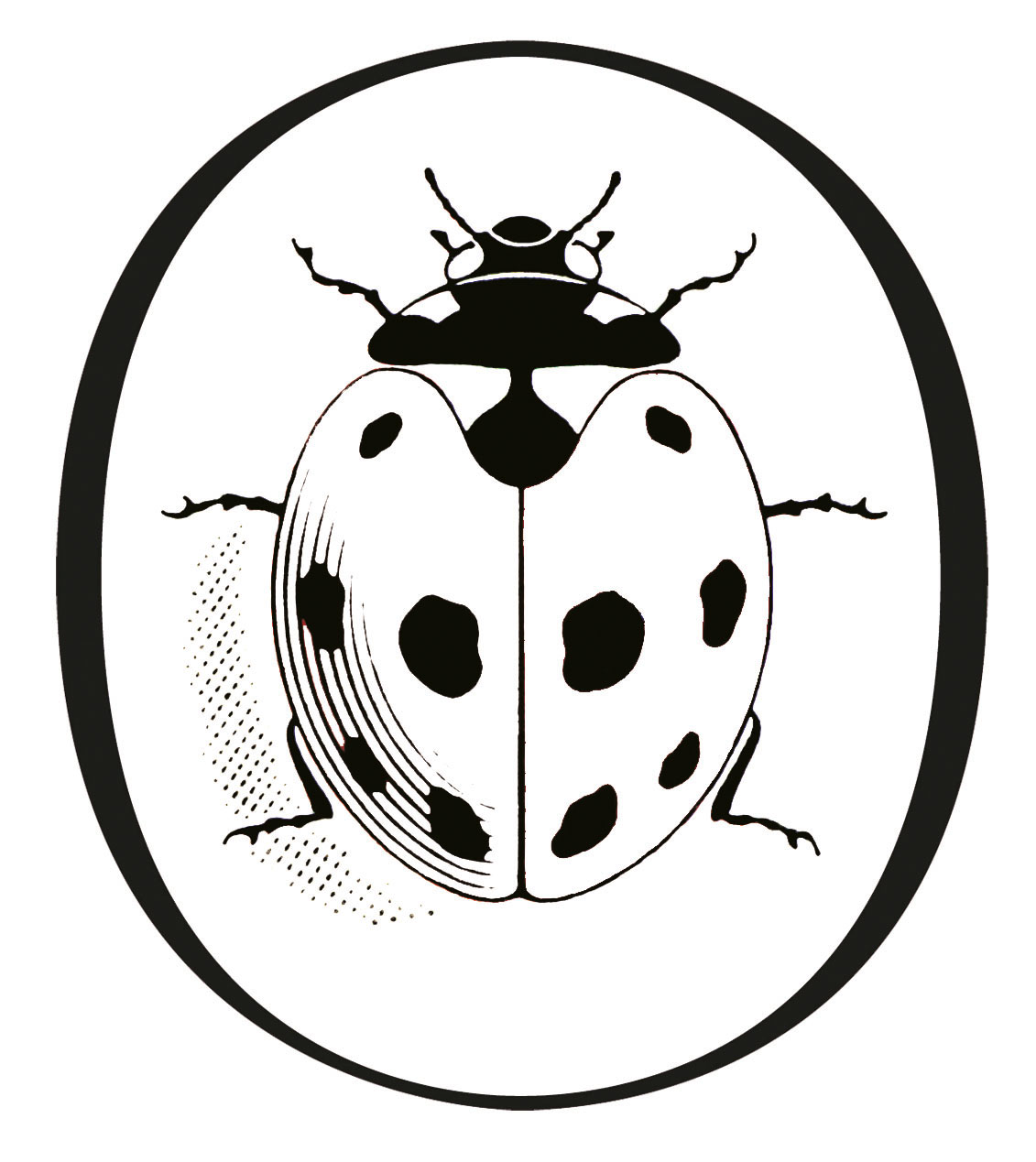
Introduction
Genetics is the study of inheritance. For us, and other animals, that means its the study of sex, families and disease. Most living things on Earth are not us, and dont have sex, but the genetics of those sexless creatures is largely similar. A simple code spells out a vocabulary that is universal in all living organisms. It is a code inherited from our parents, whether they are a male and a female animal, male and female parts of the same organism, or simply a single cell, such as a bacterium, that has split in two. The code is written in the molecule DNA, beautiful in its structure, and similarly elegant in how it works.
It doesnt take a geneticist to know that individual creatures within a species are more similar to each other than to other organisms, and that children resemble their parents more than random strangers. This is the central question of the field of genetics: how does inheritance work?
Genetics is also the study of DNA, a science only a hundred years old, in any real sense, only fifty years old with any detail. In that short period, our knowledge of DNA has upturned every aspect of biology, spawned multi-billion-dollar industries, rewritten evolution and transformed medicine. There are no areas in the science of life that have not been irreversibly changed by our decryption of this simple code.
Life on Earth all sits on one epic, sprawling, incalculably tortuous family tree. Everything on that tree is coded in DNA. This is the idea that would eventually tie together the biggest concepts in science. But only after a faltering beginning.
A false start
Though DNA would be discovered properly in the twentieth century, it was first identified in 1871. During the Franco-Prussian War, in an age before antibiotics, soldiers were dying all over Europe from gangrenous amputations and seeping open wounds. In Tbingen in Germany, a young doctor called Friedrich Miescher was interested in the chemical makeup of human cells, and had the bright if slightly ghoulish idea of extracting cells from the abundant pus-soaked bandages from the legions of soldiers slowly rotting to death in the hospital next door. Miescher isolated and purified a new substance from the white blood cells in pus. He analysed the chemistry of this extract, and noted that it was rich with phosphate and contained no sulphur. No other bodily extract had been discovered with such high amounts of phosphate, and proteins often have sulphur in them. Because he only found it in the central nucleus of the cells, he named it nuclein.
Miescher continued to work on nuclein for a few more years, later extracting it not from white blood cells, but from salmon sperm. The samples still exist in the University of Tbingen, a greying powder in small, dark-brown glass bottles. Modern tests have shown that Mieschers nuclein is indeed DNA which is rich in phosphate but contains no sulphur. But this grisly discovery would play no further role in the revolution that was about to begin.
Peas, please
At about the same time, a bit further to the east, the Moravian scientist Gregor Mendel was beavering away in his garden laboratory. Mendel is invariably described as a monk, which he was; however, his contribution to science is colossal, whereas the legacy of his monkery remains of only passing interest.
In the monastery in Brno (pronounced Brno), he bred more than 29,000 pea plants together and looked at flower colour and pea wrinkliness, and a few other traits. What he saw was that individual characteristics were passed down independently of others, and that the mixing of two traits, such as purple and white flowers, did not result in a blend (pinky flowers), but a ratio of purple and white flowers that followed a very specific pattern.
Both of these observations form the foundations of our entire knowledge of genetics and inheritance. The elements that coloured the flowers were discrete, and didnt merge in the next generation. He was unwittingly describing the gene the basic unit of inheritance, though the name would come later, at the beginning of the twentieth century.
The best idea anyone ever had
At exactly the same time, a few hundred miles west of Mendels monastic lab, Charles Darwin was beetling away, coming up with the concept of evolution by natural selection. He had observed all manner of beasts on his travels around the world on HMS Beagle in the 1830s, and at his home of Down House in Kent. He showed that life is four-dimensional: creatures were not fixed in time and could be changed via selective breeding. Daft-looking pigeons had been bred for competition over many generations, but they were still all rock pigeons, despite looking rather silly, and utterly different.
The question was how and why creatures had changed in nature. His answer was this: any characteristics in a species varied between individuals in a population within a herd of deer, some have bigger antlers than others; within a population of any species, some are naturally better at resisting infection. These differences were a pivot on which nature could act. The more suitable a particular trait was for the local environment, the more it would be passed down the generations. Over time, traits, and ultimately species, would mutate into ones which were best adapted to the changing environment descent with modification.


